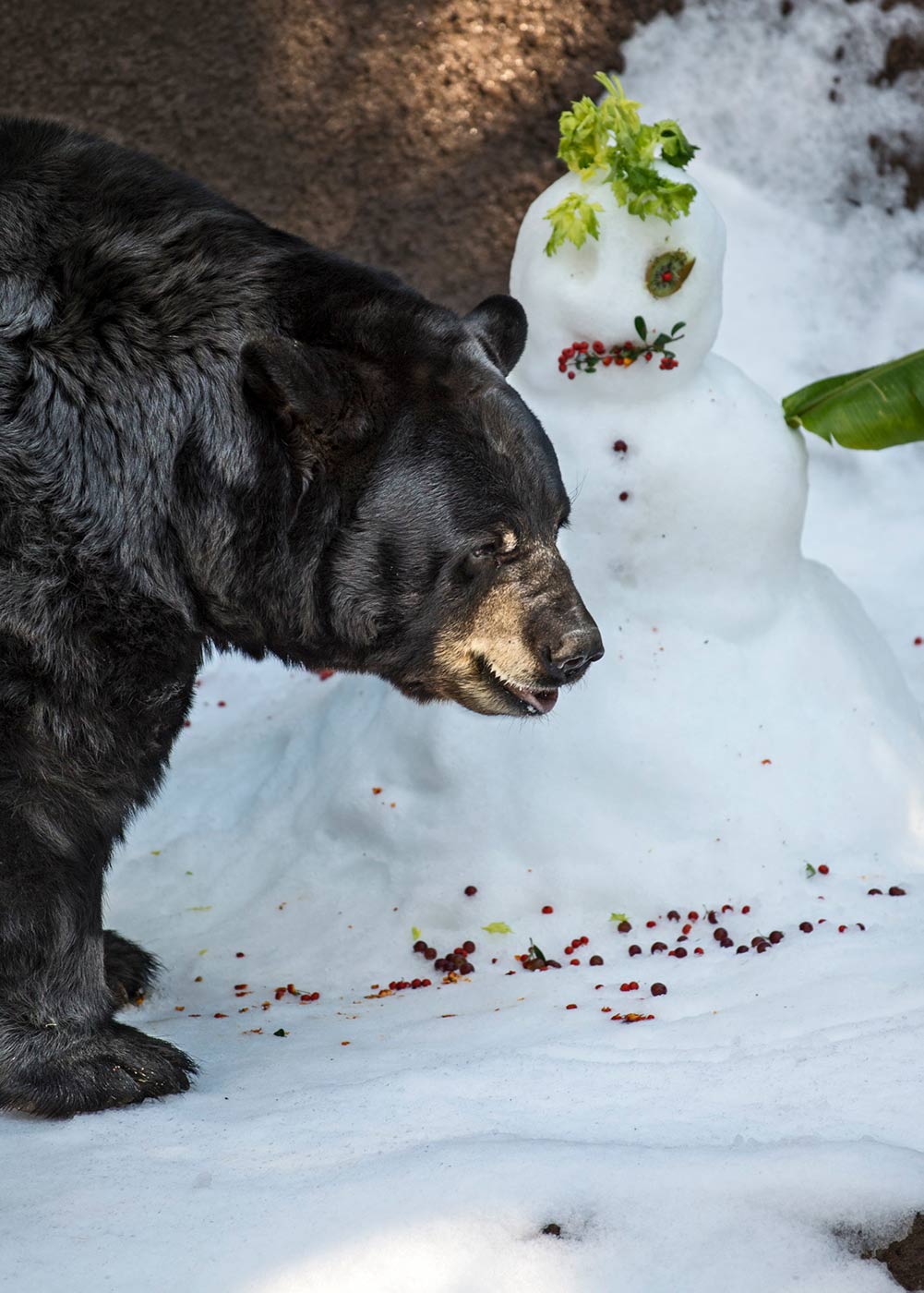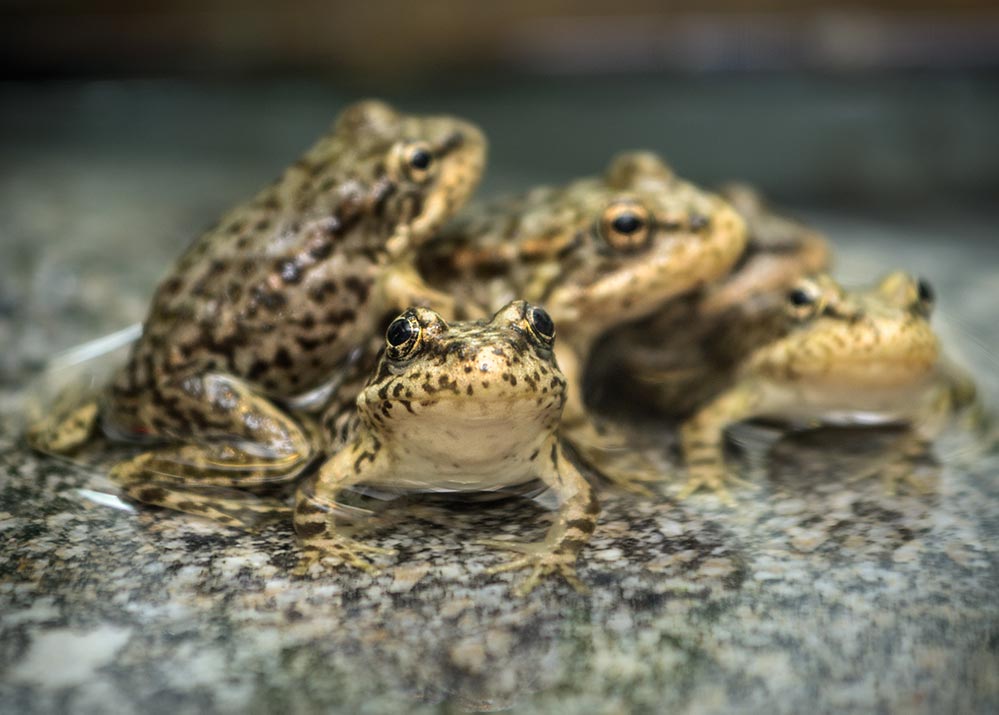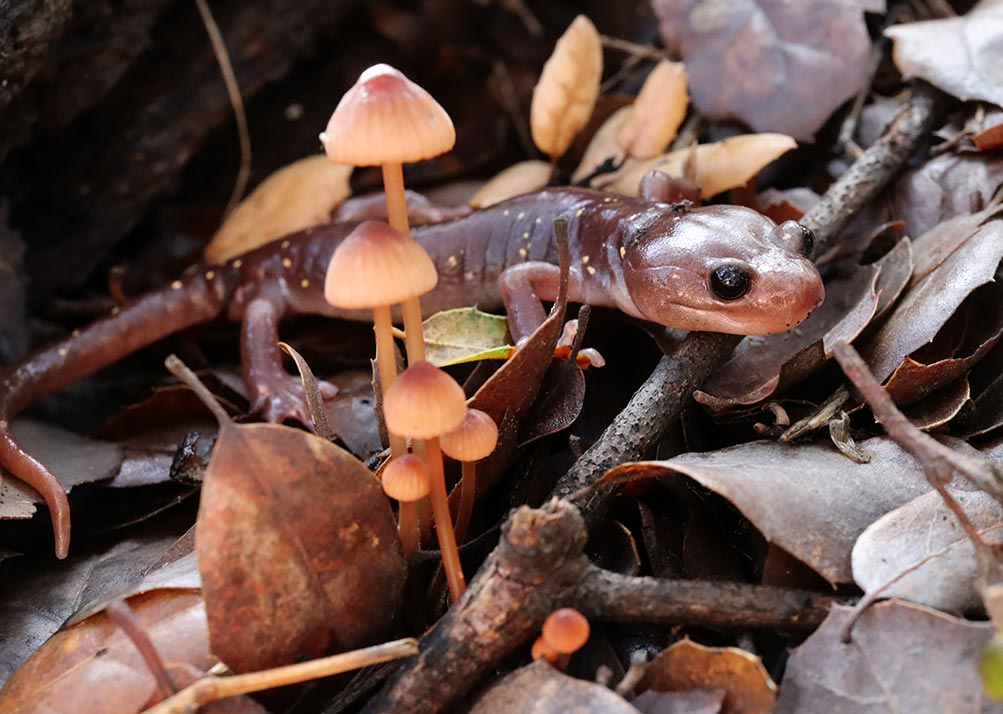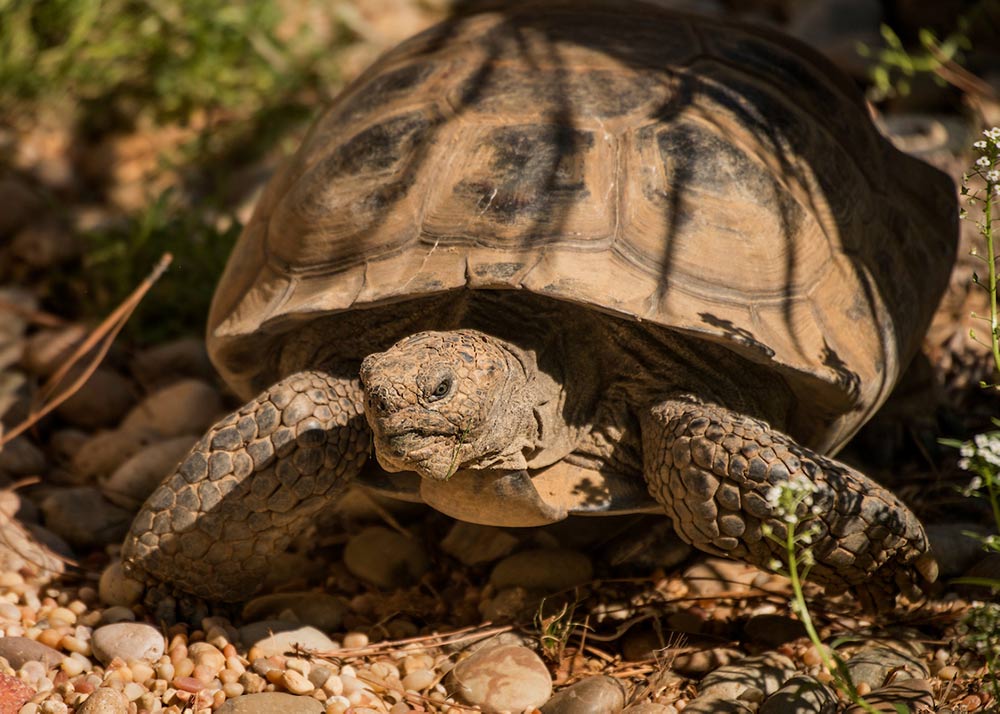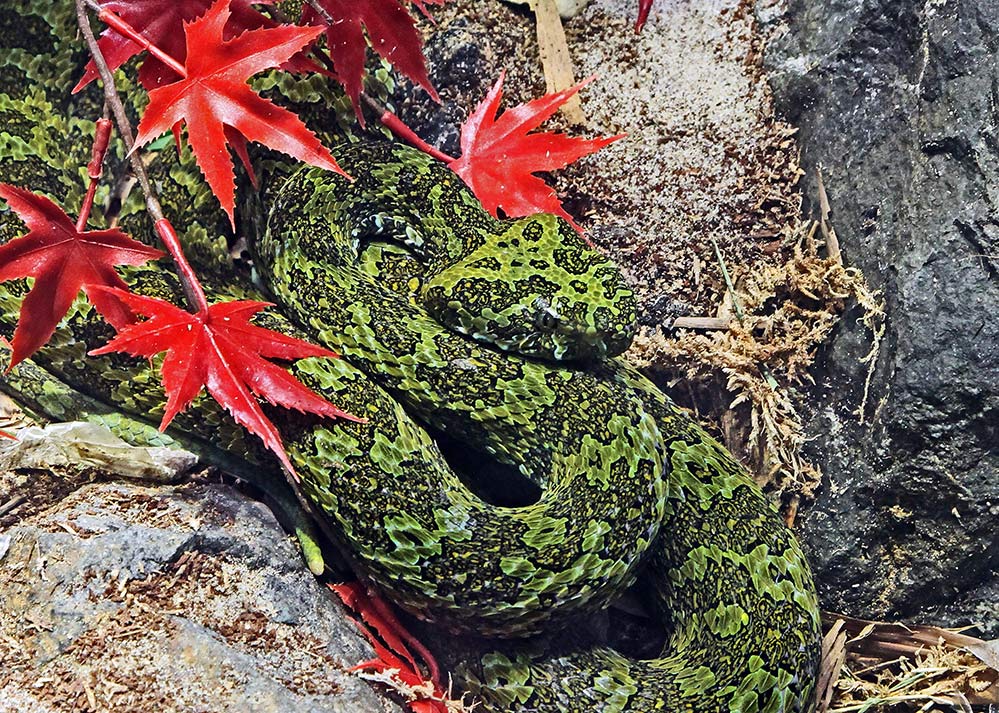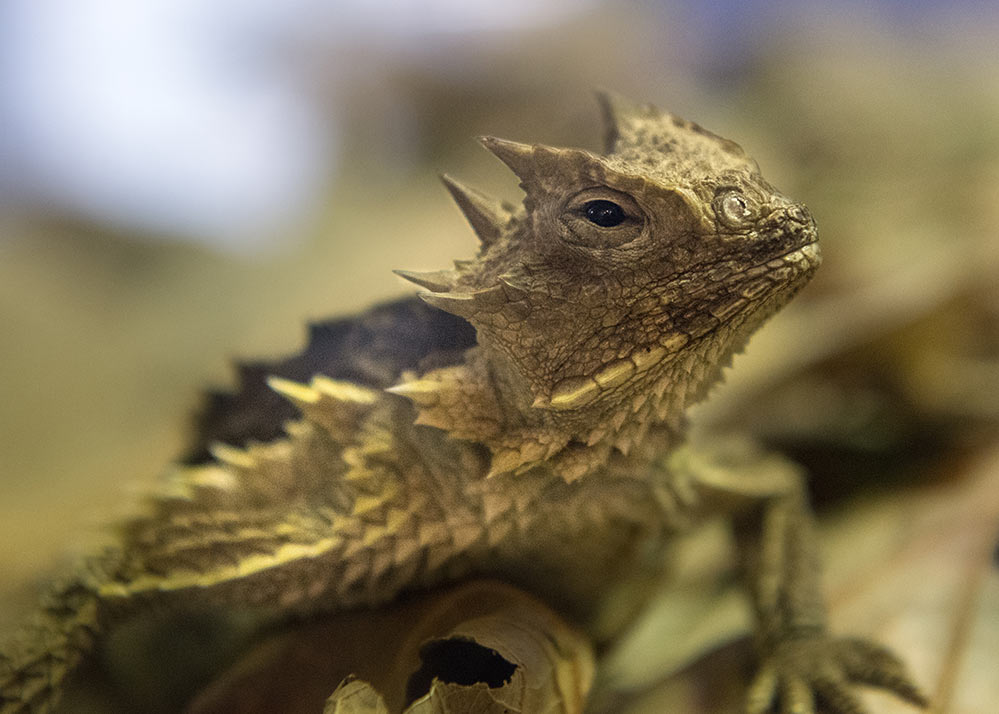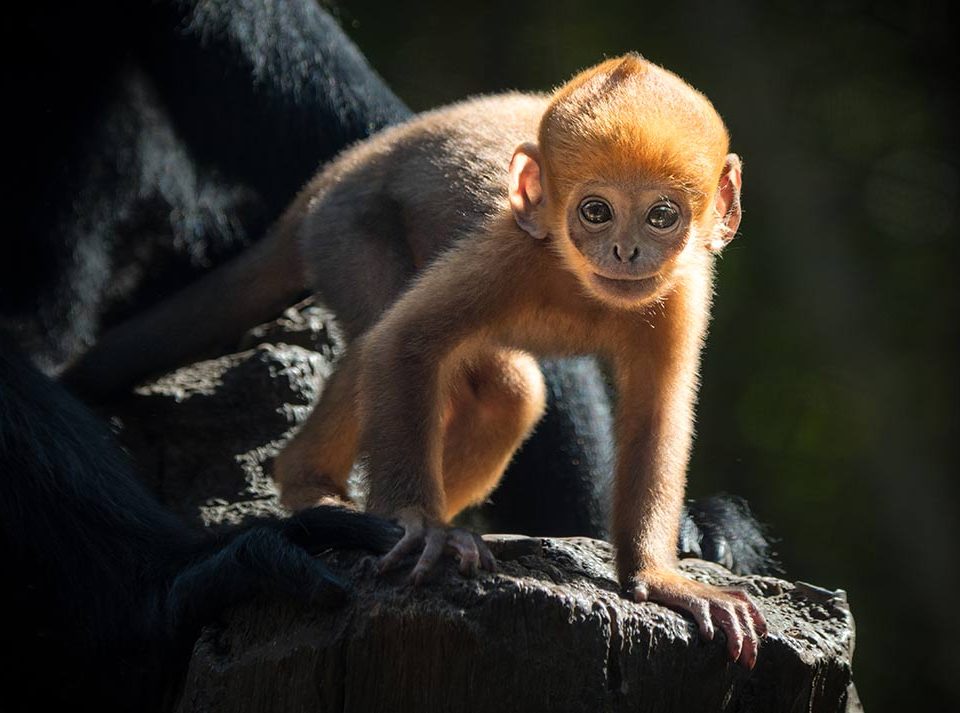Winter Wonders

New in the Zoo
November 17, 2020
Zoo Update with Tom Jacobson
November 17, 2020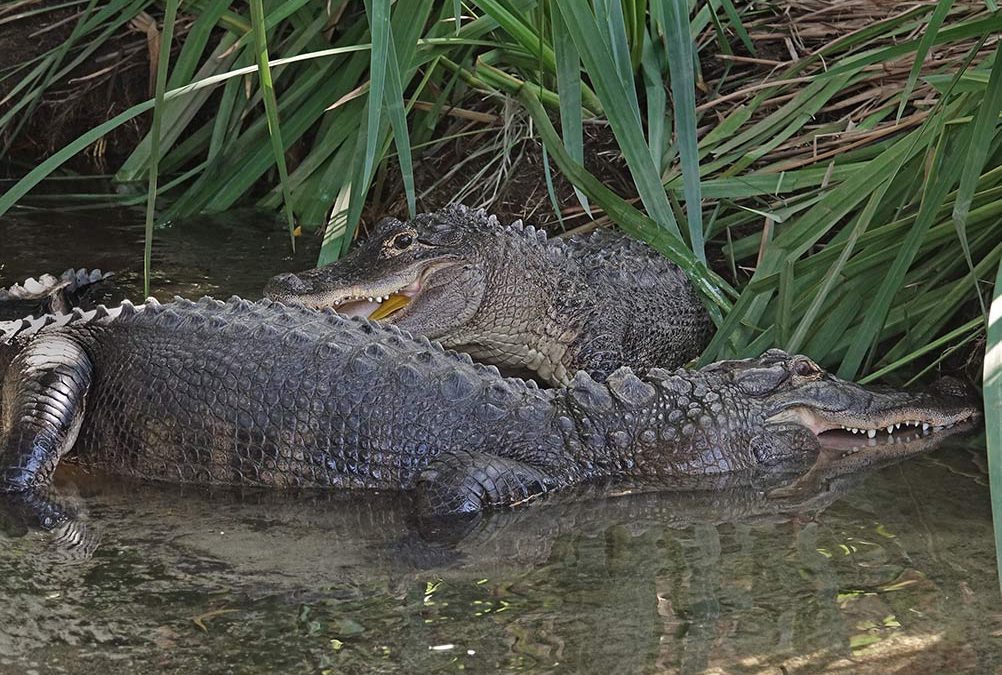
Our climate is suitable for Reggie and Tina to brumate in their habitat. Photo by Tad Motoyama
One of our special skills as humans is the ability to modify the environment to suit our needs. As the weather changes throughout the year, we artificially heat and cool our living spaces to maintain comfortable temperatures. So, our bodies normally don't have to work very hard at thermoregulation (controlling internal temperature) to maintain homeostasis (the ideal body temperature range). Other animals generally do not have this luxury, but they do possess remarkable adaptations that allow them to cope with extreme temperatures.
In mammals, hibernation is a state where bodily functions slow dramatically for an extended period of time—weeks or months. True mammalian hibernators include bats, hedgehogs, and ground squirrels. Although bears are still closely associated with hibernation, they do awaken and move around inside their winter dens, so they actually experience torpor during winter months in cold climates. Torpor is shorter and less intense than hibernation. Bears do not feed at this time, however, and rely on fat stores that they build up over the course of the year. Those that live in warmer climates, like our resident American black bear, Ranger, remain active throughout the winter months because food sources are available year-round. Similarly, echidnas experience torpor or hibernation depending on where they originate in Australia. Because our Southern California climate is similar to that of their native habitat in southern Australia, the Zoo's three echidnas remain in their habitat and go into torpor as local temperatures dictate.
Hummingbirds (even some in tropical climates) experience torpor nightly, their feet securely gripping branches to hold them in place while their systems shut down until the sun rises and temperatures climb enough to activate them. Many familiar mammals, including raccoons, skunks, and mice, also experience torpor.
If some of your favorite reptiles at the Zoo seem to vanish in late autumn, it might be because they have entered a dormant state for the winter months. Brumation is essentially the reptilian/amphibian version of hibernation. During this period, a reptile may not eat, drink, defecate, or move for several weeks. (In hot weather, energy conservation is also important, so in response to extreme heat, many reptiles and amphibians as well as some invertebrates and mammals enter a similar state called estivation.) In spring, warming temperatures, increased daylight, and changes in barometric pressure, cause emergence.
Mountain yellow-legged frogs in their natural habitat spend the winter “chilling out” under ice—both tadpoles and adults can survive up to nine months in the bottoms of lakes, their bodily functions dramatically slowed. Cold spells like this are an important part of the reproductive cycle for many reptiles and amphibians. At the Zoo, animal keepers mimic the winter chill for the frogs in their care in order to prompt breeding behavior in the spring.
American alligators Reggie and Tina are able to brumate naturally in their Zoo habitat. "Depending on the temperatures, they can start earlier or later each year. Their exhibit is not heated at all," explains Senior Animal Keeper Chris Rodriguez. "Outside the LAIR, the tomistomas have a heated pool, but we still allow them to cool off a little during the winter months. The hope is that as the temperature drops from the high 70s and low 80s down to the low 70s, the change will induce breeding behavior. As far as the Indian gharials go, they are still too young to breed, so we keep their water temps stable in the high 70s year-round." Desert tortoises like Trucker, who lives in the Winnick Family Children's Zoo, spend the winter months brumating in off-exhibit quarters. Other Zoo reptiles who will be chilling out for the winter include montane pitvipers, giant horned lizards, Mangshan vipers, and Ethiopian mountain vipers.
Remaining active in cold weather means expending energy to stay warm and find food. Many bird species migrate great distances seasonally, following flourishing plant and insect populations from northern to southern latitudes and back again. In autumn, birders in Southern California look forward to the return of seasonal visitors such as white-crowned sparrows, yellow-rumped warblers, cedar waxwings, and merlins, which are regular winter guests on Zoo grounds.
How will you be spending the winter months?


